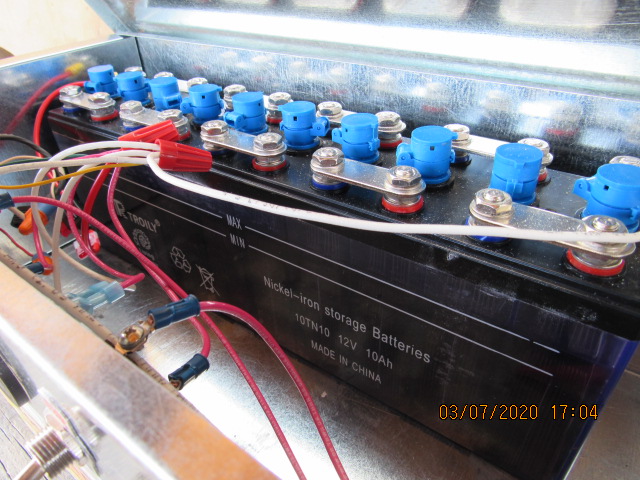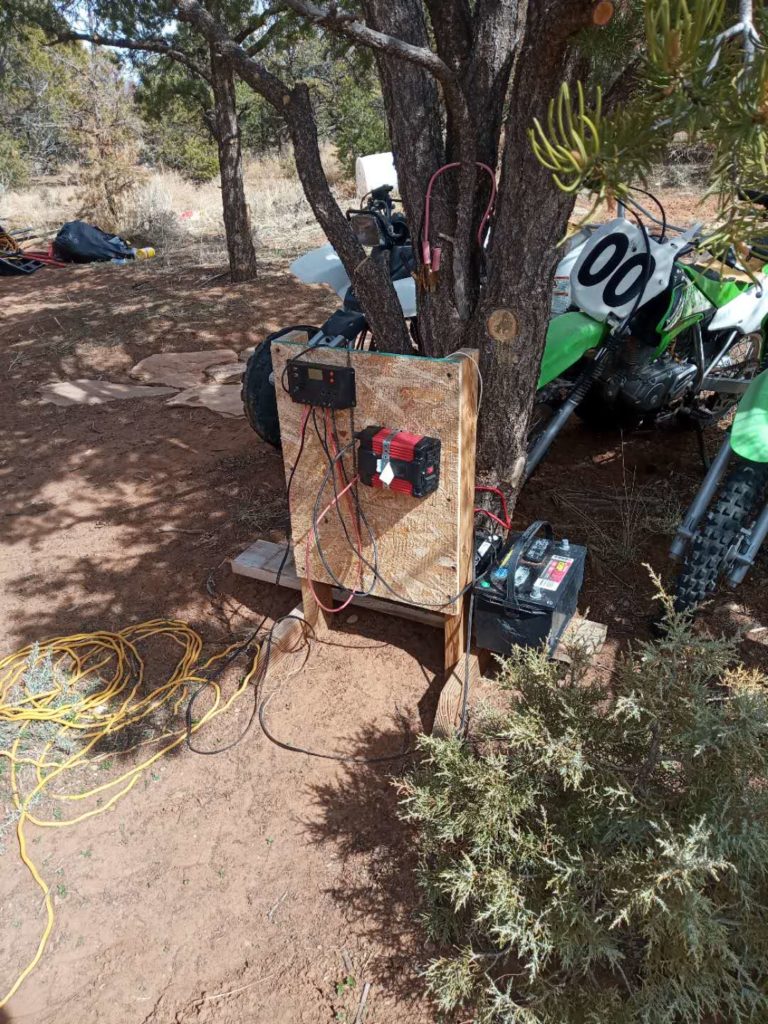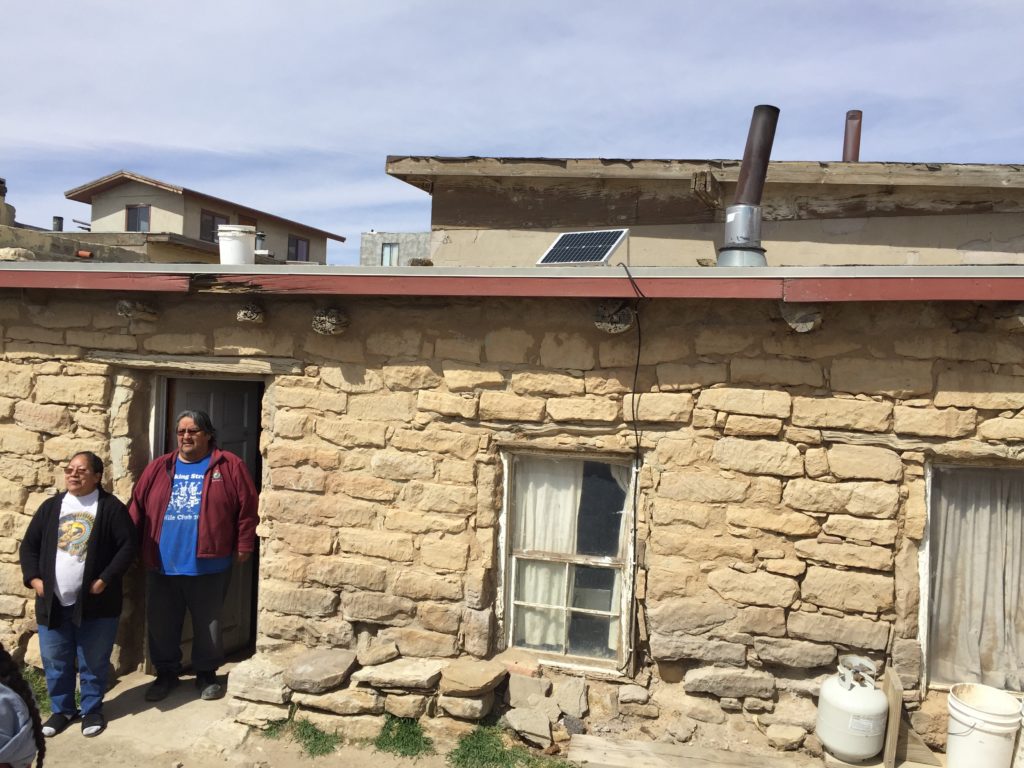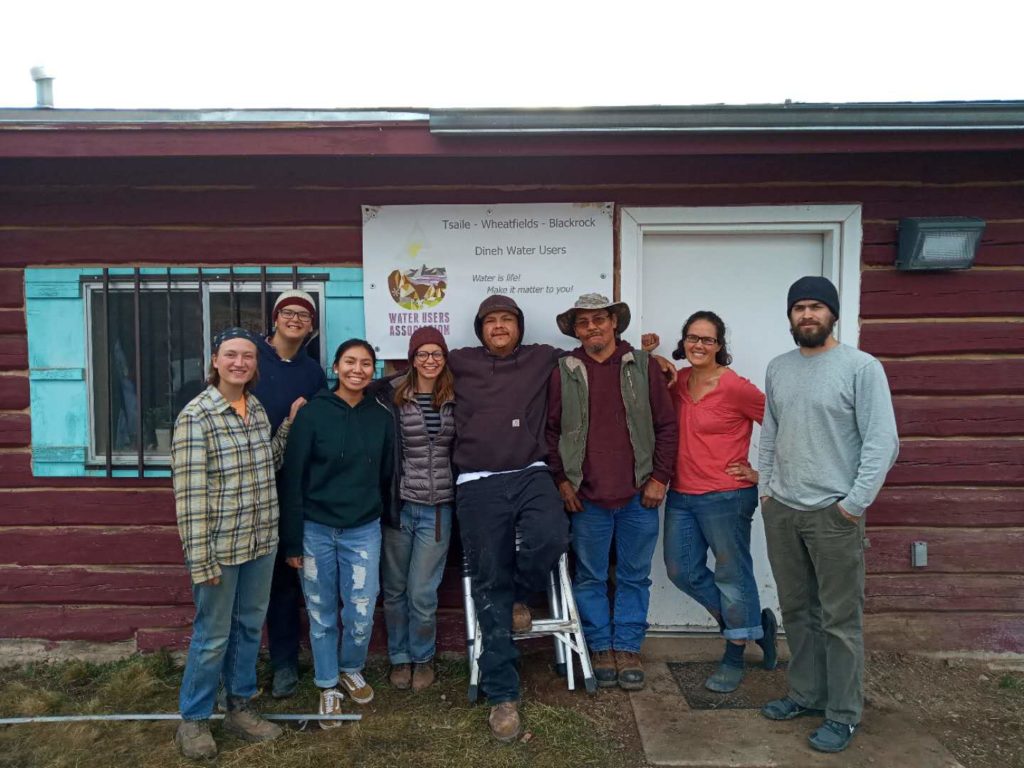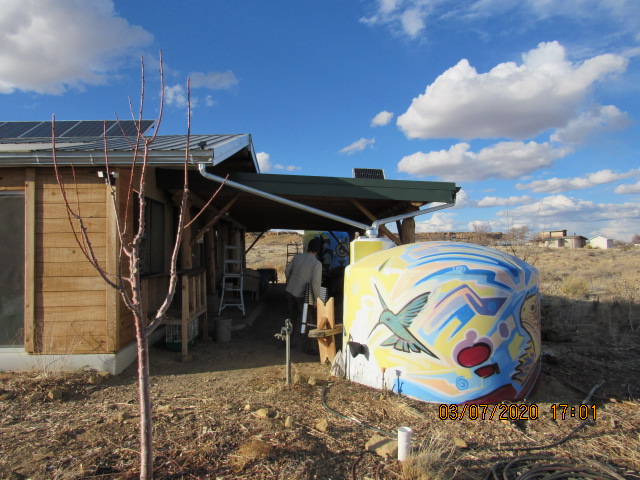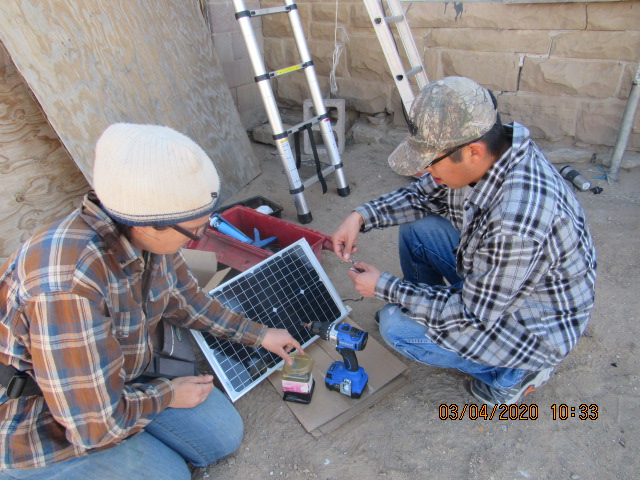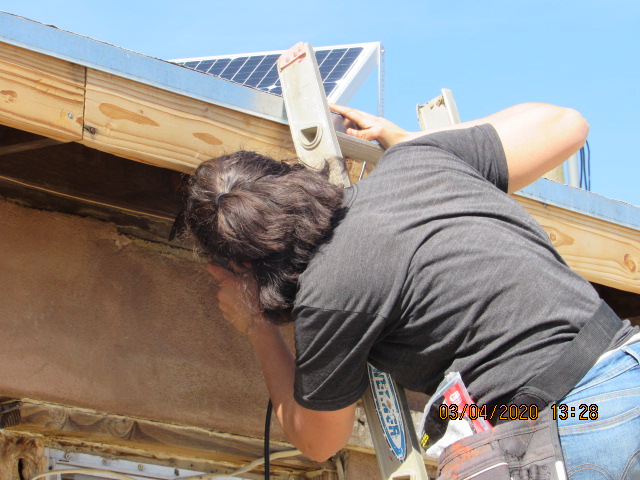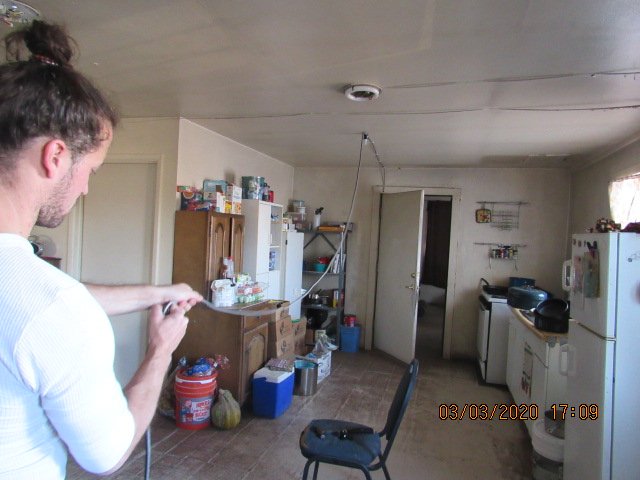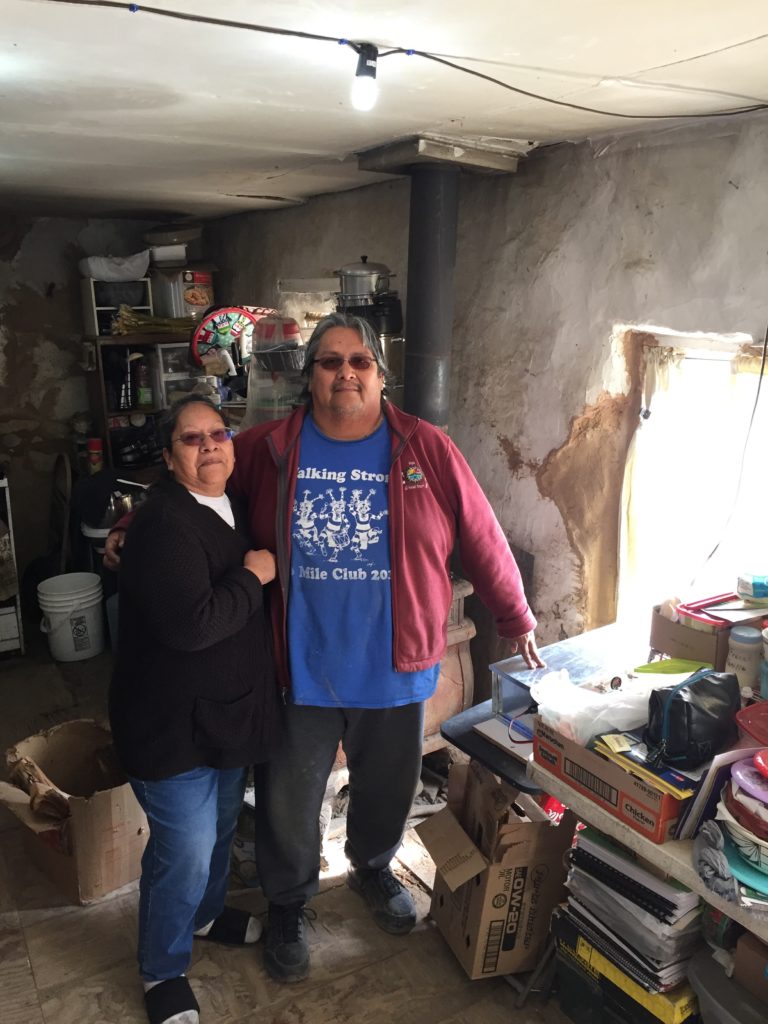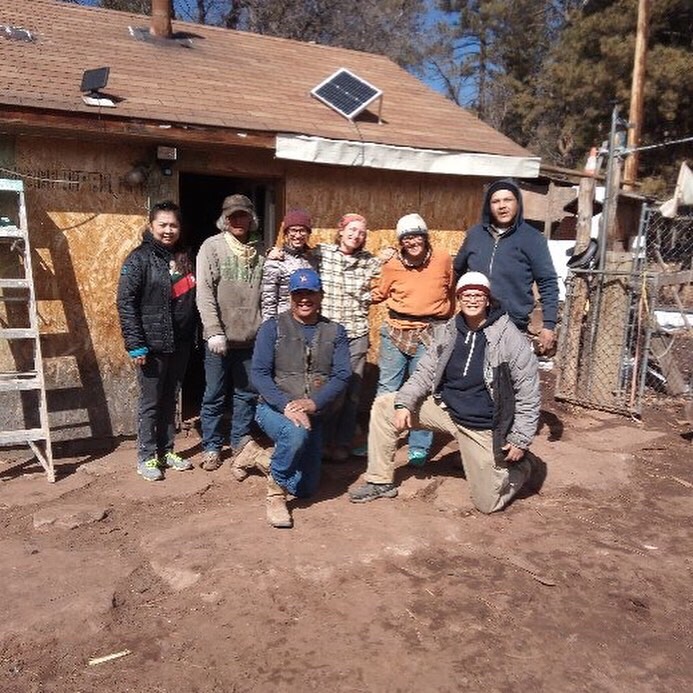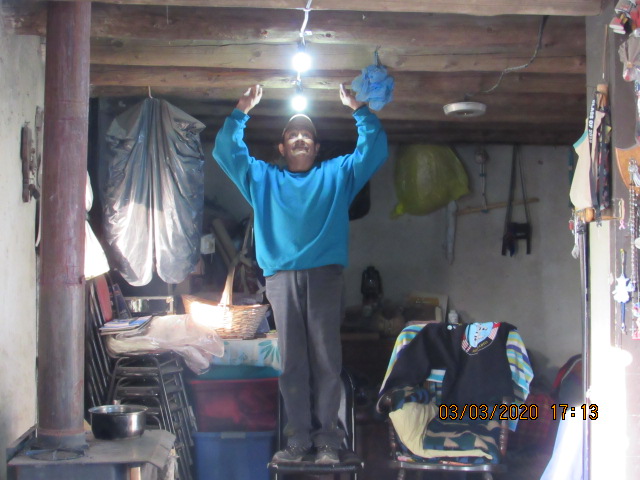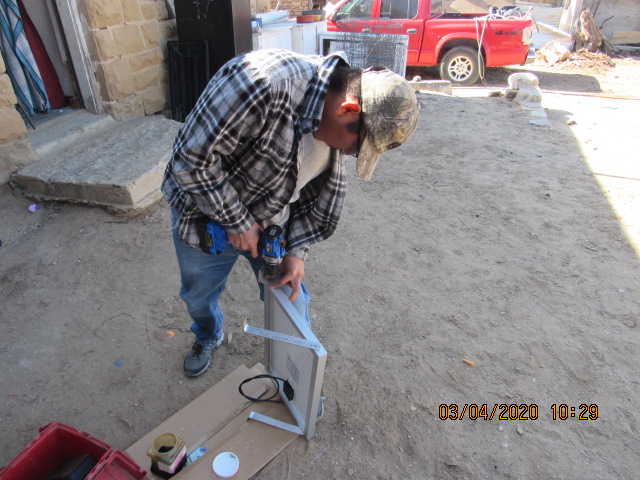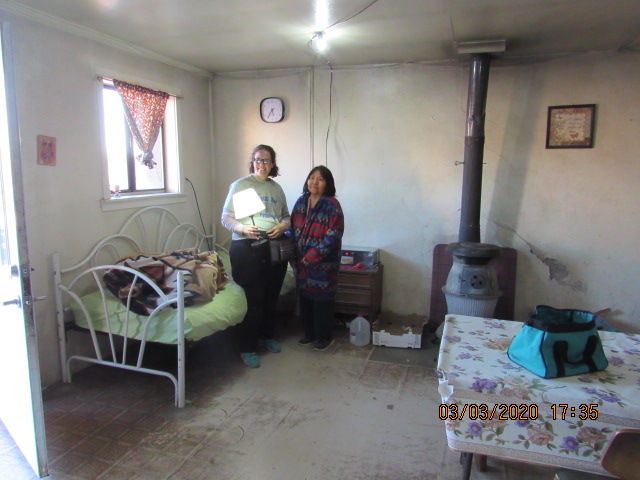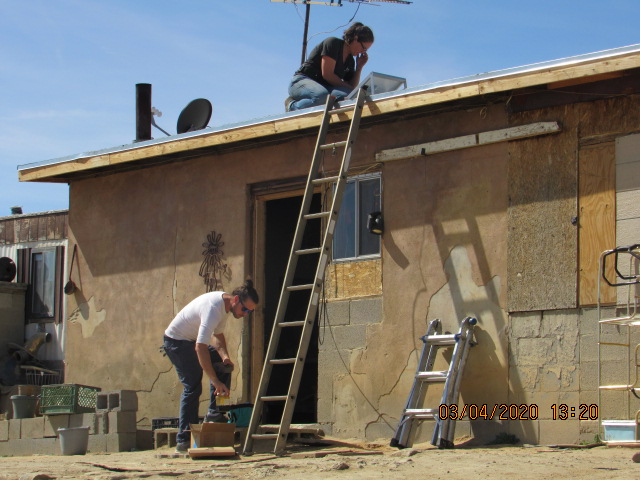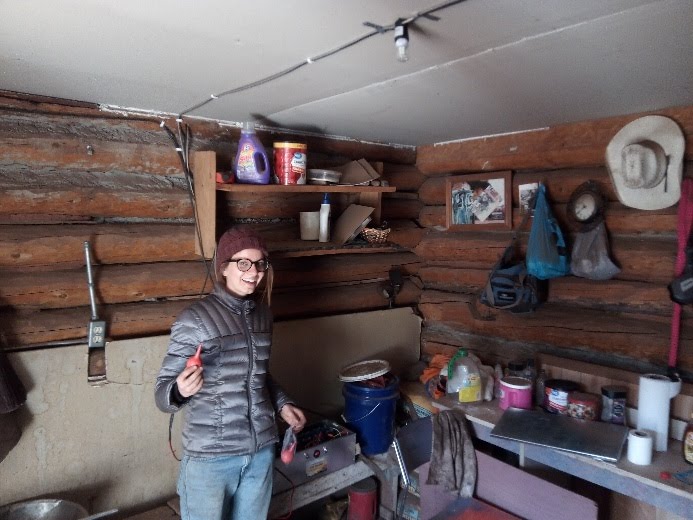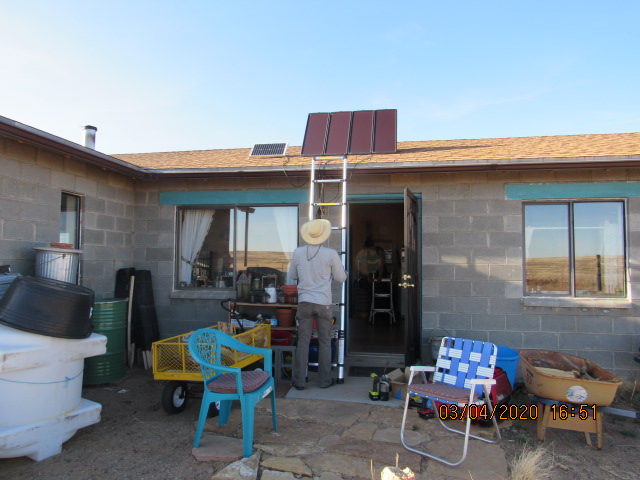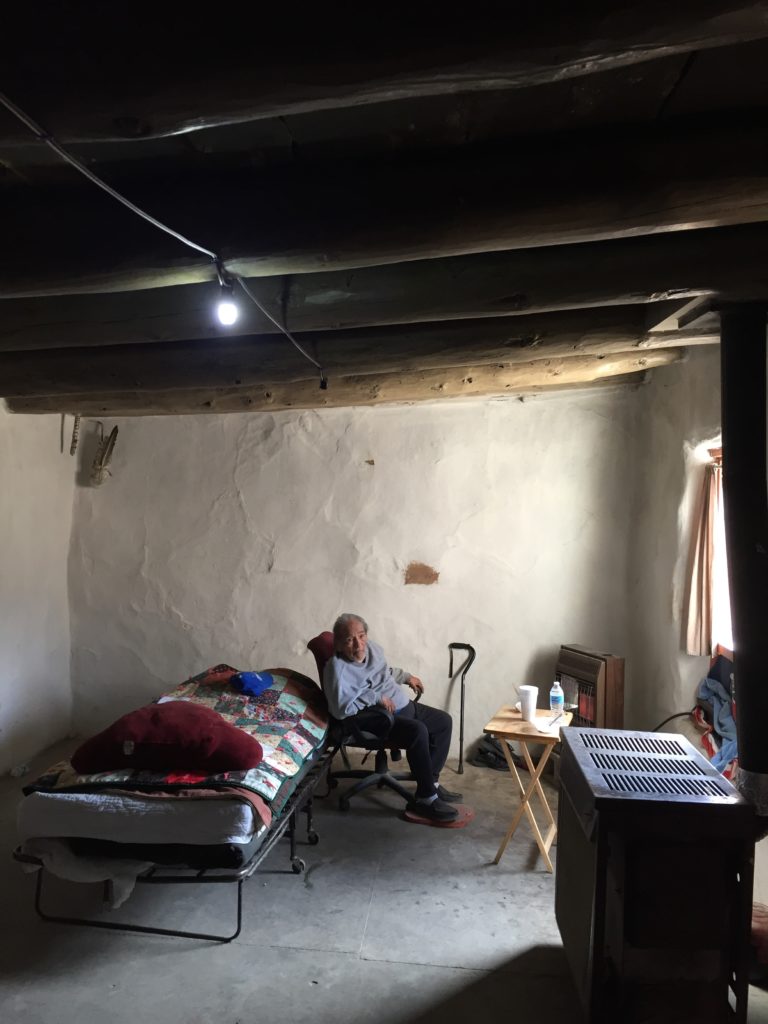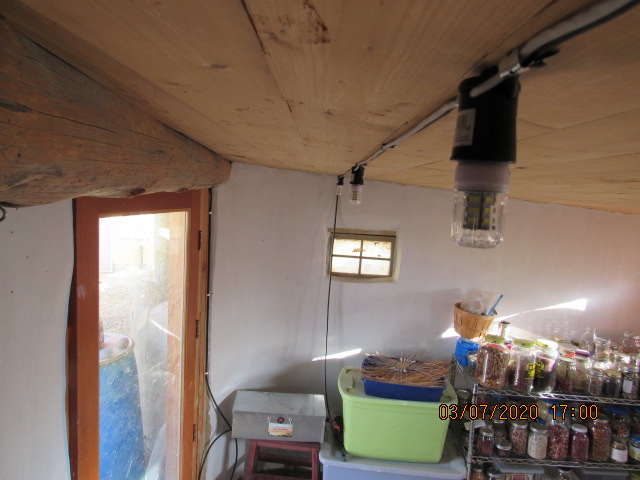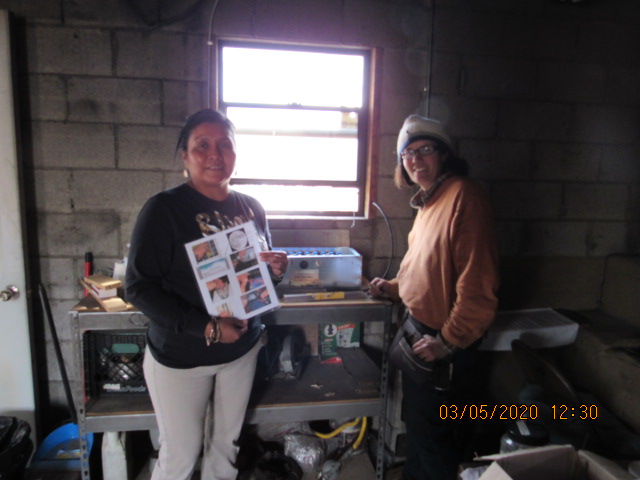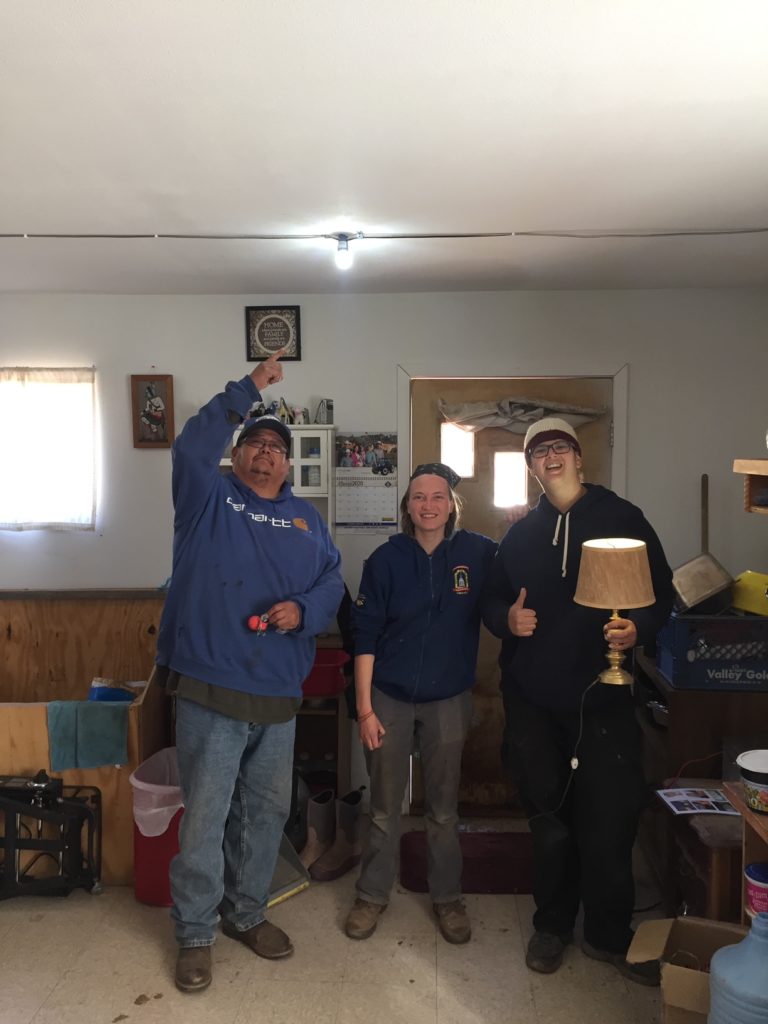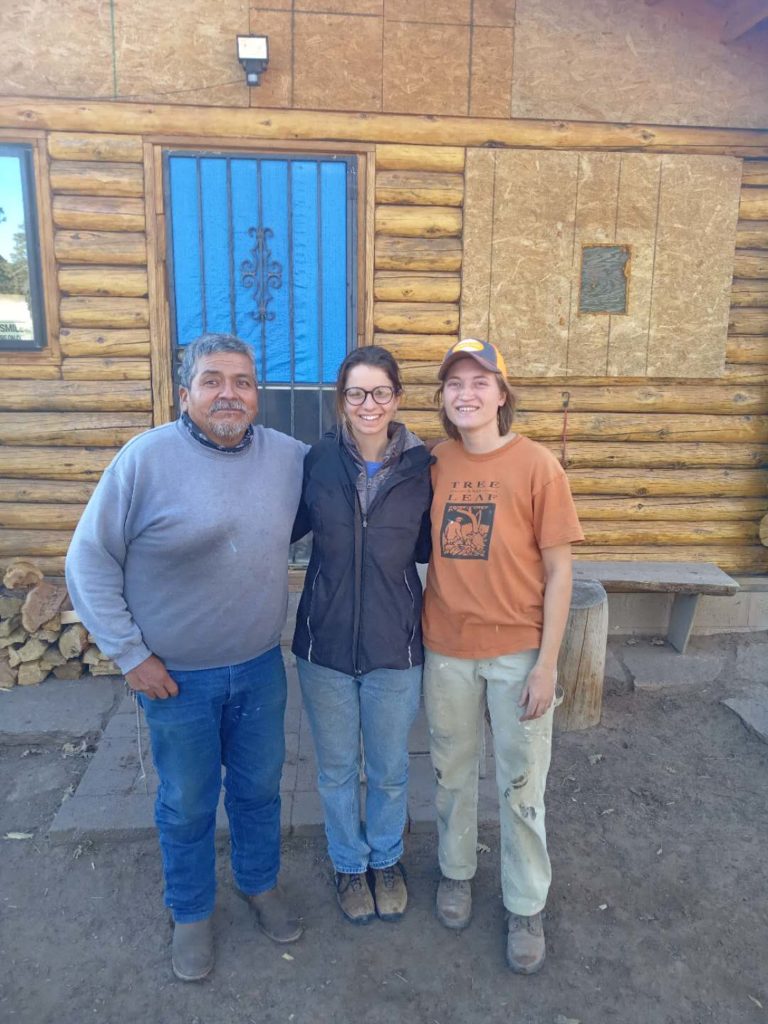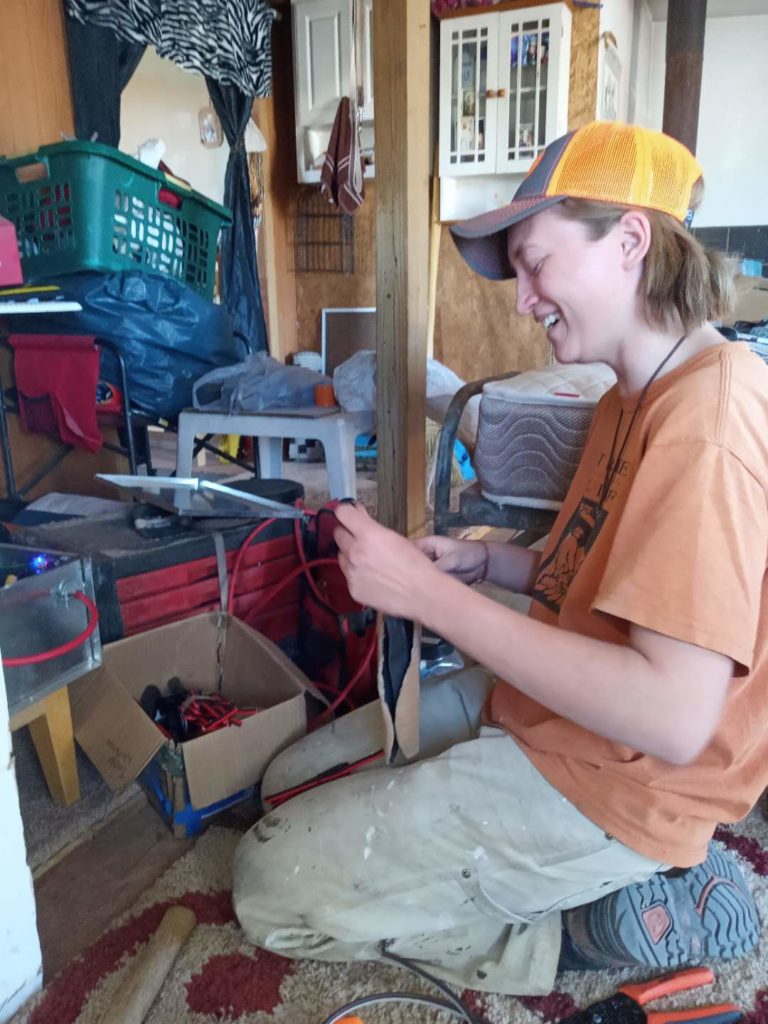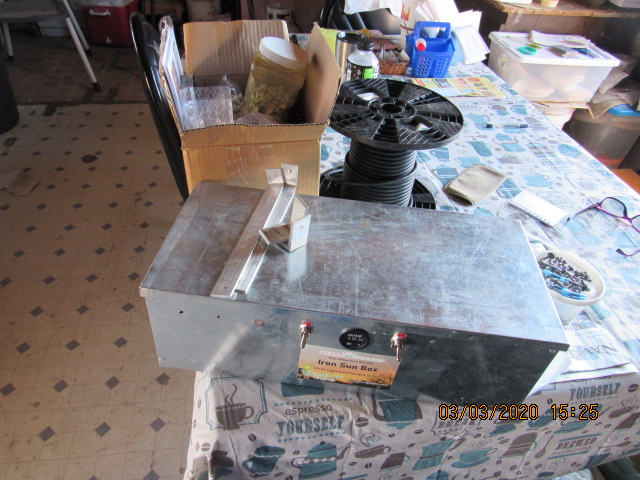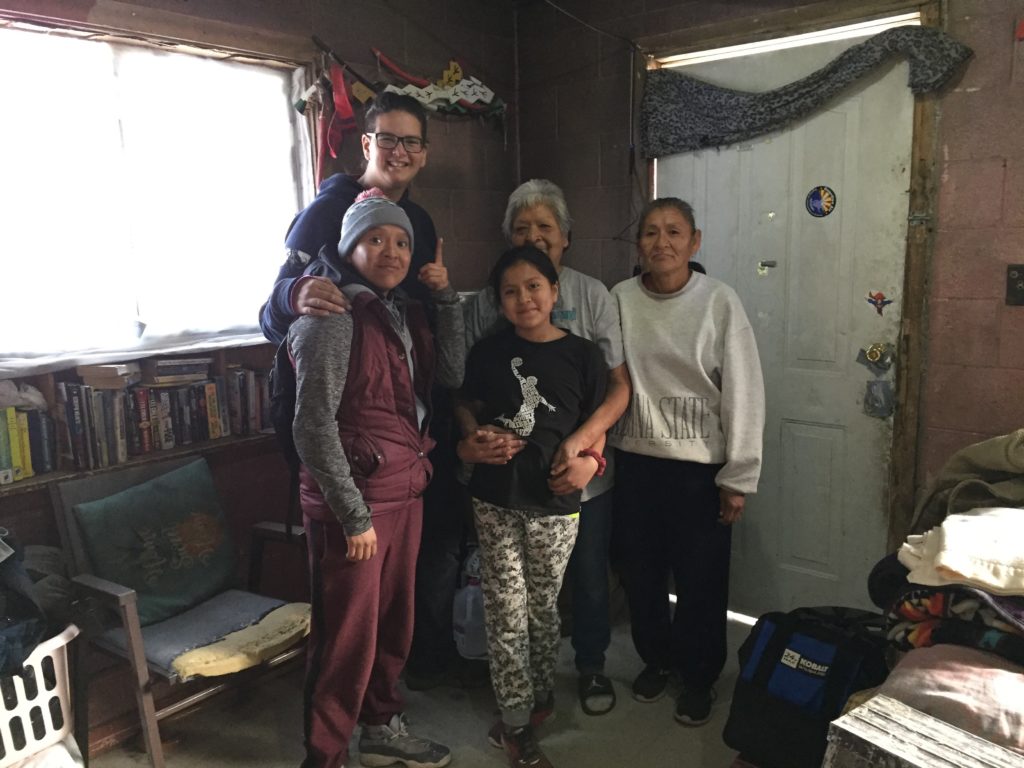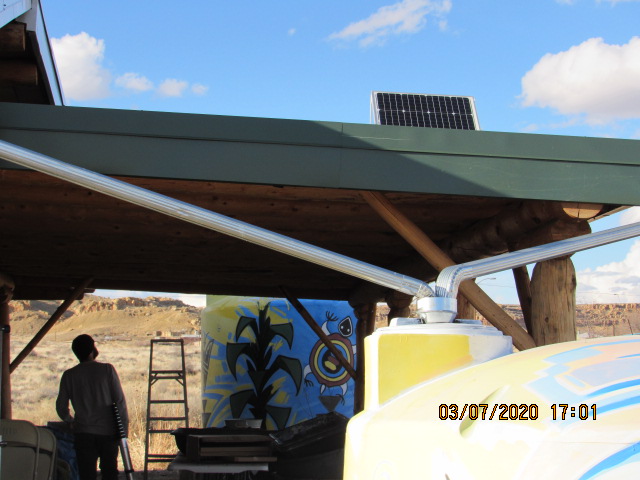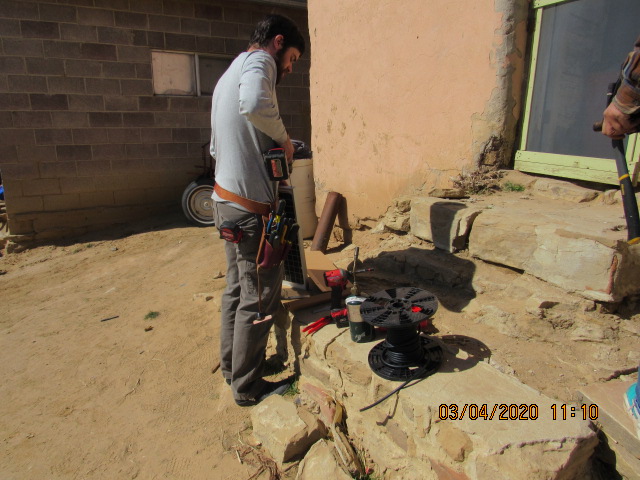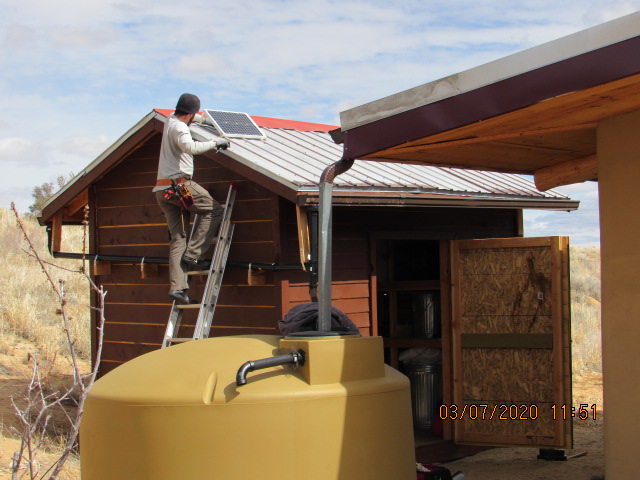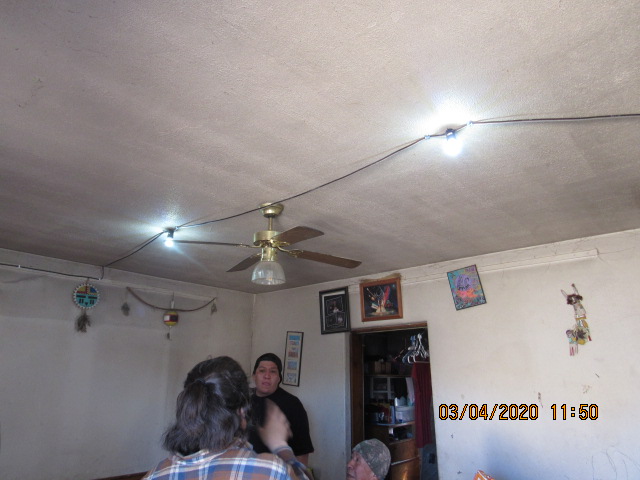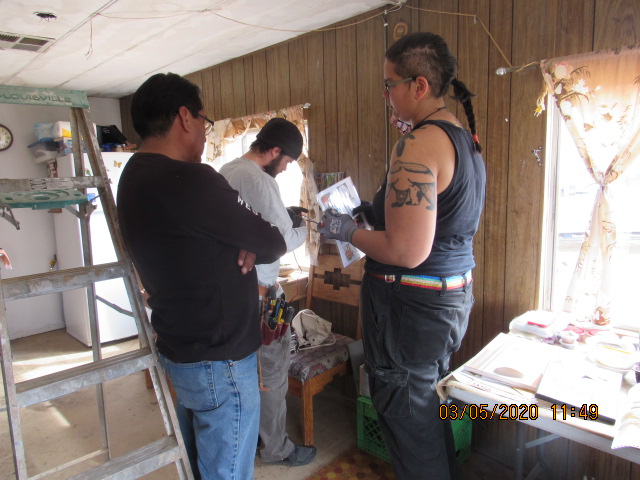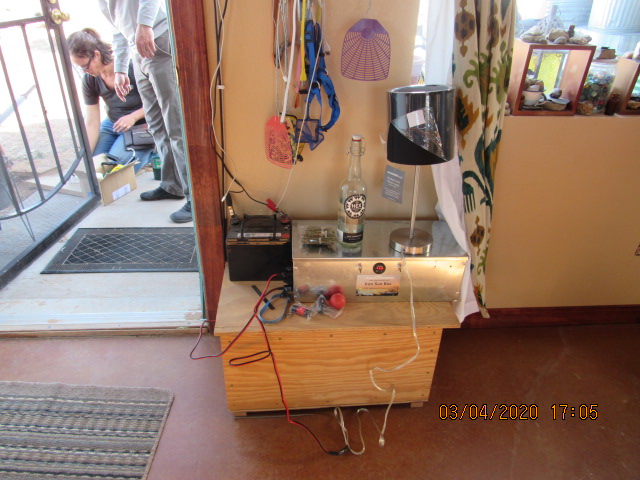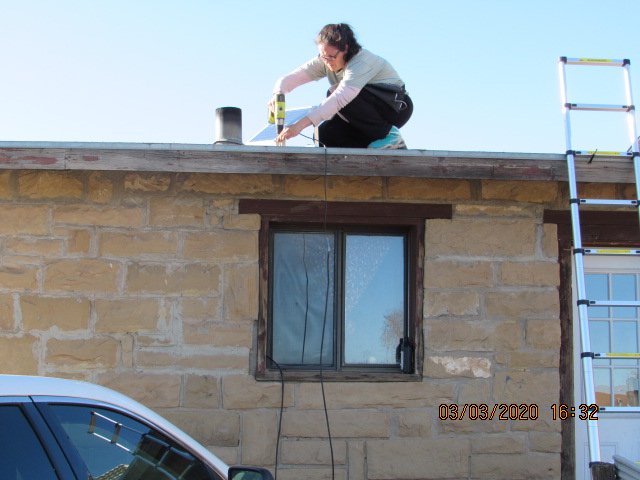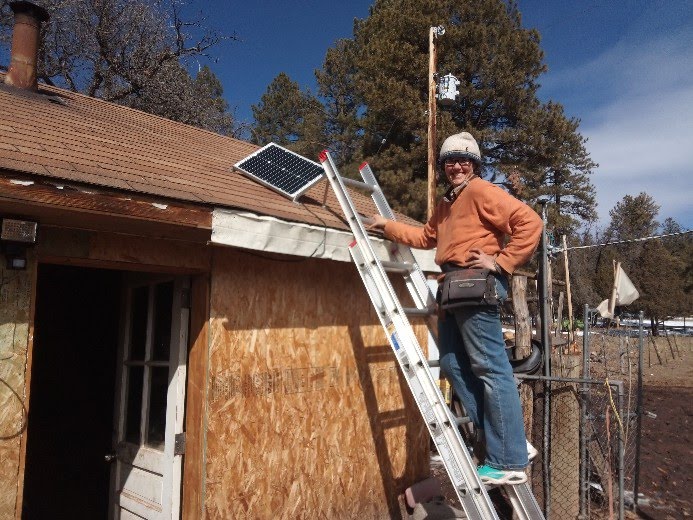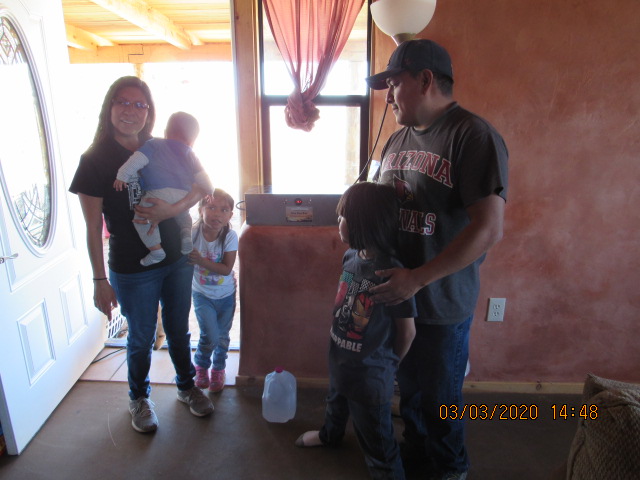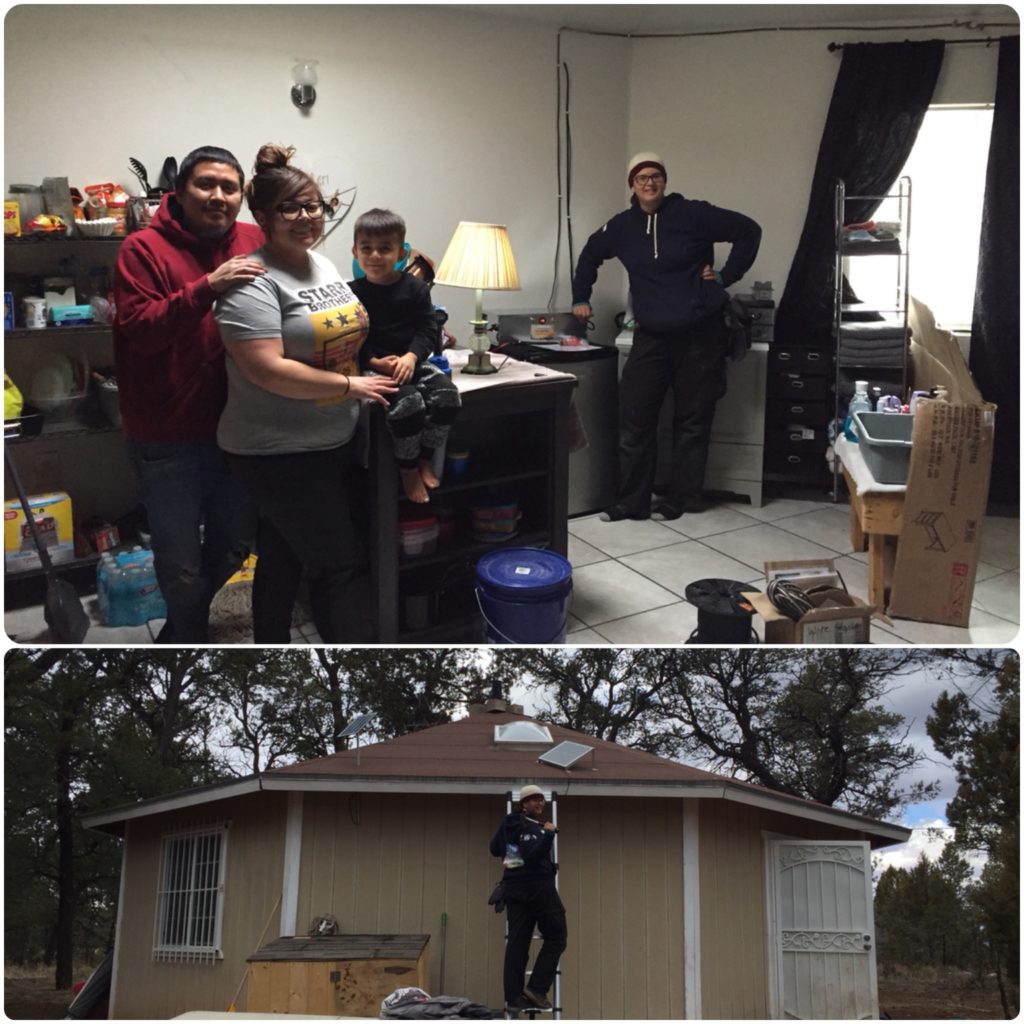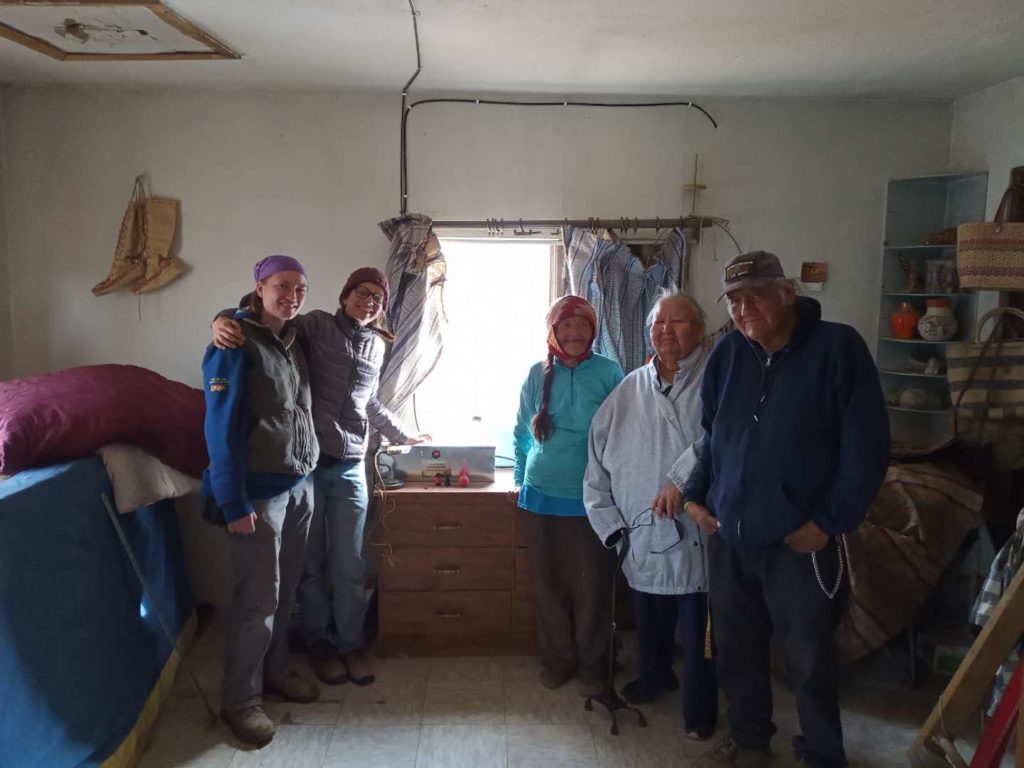In March 2020, a crew from Living Energy Farm travelled to Tsaille, Arizona, in the Navajo Nation. (The Navajo people mostly call themselves Dine’.) We brought with us the equipment and tools to install 55 Iron Sun Cabin kits. These kits use durable nickel iron batteries, and have the capacity to provide a family with power for lighting, device charging, and small 12V appliances.
The Dine’ and Hopi reservations are home to the largest population in the US living without grid power. Some of these folks are too rural to access the grid, some don’t have the money, some have been denied grid power for political reasons, or choose not to use grid power for environmental reasons. For decades, people on the reservations have explored alternative energy sources. But the off-grid solar industry has largely failed these people, as it has failed poor rural people all over the world, by offering only expensive, complicated AC-based systems prone to shutting down, and fragile, toxic lead-acid batteries that only last a few years. Today, broken and abandoned solar junk is scattered across the reservation.
Because most folks on the reservation living off the grid consider lead acid, AC-based solar kits to be a waste of resources, they rely on kerosene lamps, or generators, or go without power completely. This presents a host of concerns for health, safety and quality of life. That’s why dozens of people on the rez jumped at the chance to apply for a durable solar kit for their family.
Thanks to generous donations from our friends in Virginia, Living Energy Farm was able to offer these Iron Sun kits free of charge. We would not have been able to do these installations without the support of three organizations: Tsaile/Wheatfields Dineh Water Users, Second Mesa Community Center, and the Hopi Tutskwa Permaculture Institute. These generous folks offered us room and board, drove us to our installations, and even took us sight-seeing!
Our three host organizations are all interested in becoming local centers for building, distributing and repairing Iron Sun kits. To this end, we trained Darron and Emerson from Dineh Water Users, and Alex from Hopi Tutskwa, on installing the kits and doing simple repairs. The COVID pandemic has put a damper on our fundraising efforts, but if resources allow, we would like to bring them to Virginia in the fall of 2020 to do more in-depth training, and learn to build the systems.

Alex training on electrical connections 
Running a wire from the panel to the box 
We installed overhead lighting with 12V LED bulbs 
A Hopi couple with their Iron Sun box and overhead light 
Our first installation, for a Dine’ elder 
People were so happy to have solar lights! 
Alex attaching brackets to a panel 
Our first installation at the Hopi villages was for Alex’s grandparents!
Our crew installed 47 systems, and donated the rest to our host organizations, to help seed new businesses selling and maintaining the kits. Already Dineh Water Users has had several requests from satisfied families to upgrade their systems by adding battery capacity or a compatible refrigeration system.
We are excited to continue working with folks on the reservations, by offering training and support with sourcing tools and materials. If funding allows, we would love to do another round of non-profit installations next year.
Over time, we expect that this technology will spread widely by word of mouth, as people realize how reliable and durable the DC Microgrid approach is, compared to typical off grid solar kits. It’s a lot more affordable, too: a typical quote for an AC-based solar kit is $10,000-$30,000; while similar services from a DC Microgrid would cost about $4,000 (the combined cost of an Iron Sun Homestead kit and Sundanzer refrigeration system). For many folks on the reservations who run generators, DC Microgrid systems will pay for themselves in a few years.

A Dine’ installation 
Onyx makes an electrical connection 
The Iron Sun box and installation supplies 
Stephanie and Sam at a Second Mesa install 
At the Hopi Tutskwa Permaculture Center 
Jonathan drilling a panel 
Jonathan mounts a panel 
A piki house, a traditional Hopi outbuilding 
These bulbs are only 3 watts, but very bright! 
Stephanie explains the system 
Alex installs a panel 
Iron Sun box and another (inferior) solar kit 
Lights on a piki house 
A typical Hopi house
We really believe in what we’re doing, and we’re obviously not in it for the money. People on the reservation could tell that we were different than the typical nonprofits that come through, pushing off-grid solar technology and then going home to grid power. We know our DC Microgrid approach works because we’ve been happily living with it for ten years. We believe that this technology can make the centralized, fossil fueled power grid obsolete, and go a long way towards addressing the climate change. All we need is for people to start using it. Native people are much more open to using this technology, even if slight lifestyle changes are necessary. When it comes to living on solar energy, like so many issues related to the ecological crisis, we should all be looking to indigenous people to show us the way forward.

